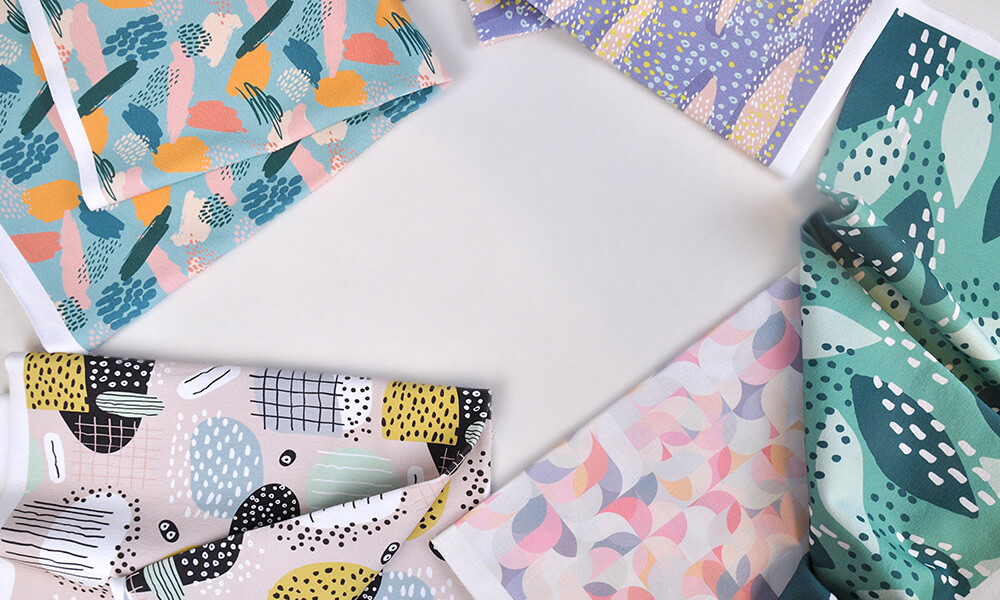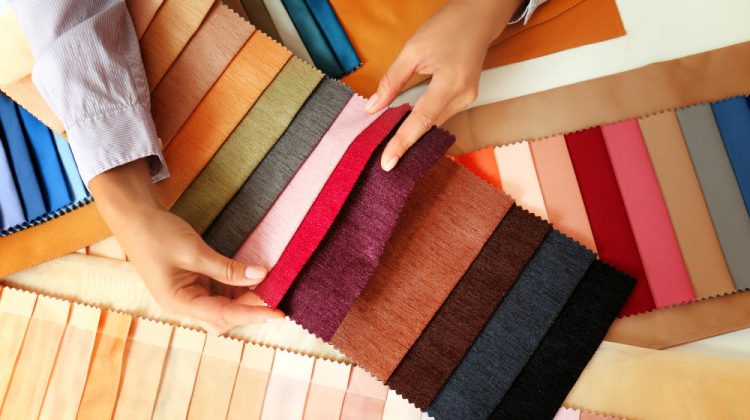6 Easy Facts About All 4 Way Stretch Fabrics Described
6 Easy Facts About All 4 Way Stretch Fabrics Described
Blog Article
Getting The All 4 Way Stretch Fabrics To Work
Table of ContentsAll 4 Way Stretch Fabrics for BeginnersWhat Does All 4 Way Stretch Fabrics Do?Getting My All 4 Way Stretch Fabrics To WorkFascination About All 4 Way Stretch FabricsSome Known Questions About All 4 Way Stretch Fabrics.The 2-Minute Rule for All 4 Way Stretch FabricsThe Greatest Guide To All 4 Way Stretch Fabrics
As I likewise want UV defense from my garments when I go out, I would certainly select a densely woven cotton fabric. One even more consideration when getting the fabric is the way it will certainly after washing.A secure wager would certainly be to purchase at least 10% additional textile. If you can acquire preshrunk material, this is the ideal.

If you are matching the shade, like selecting the cellular lining for the main textile or selecting textile to include as trim, this is particularly crucial. The fabric display rooms will usually have a light well where you can see the material in sunshine (or a window with good light from outside).
See This Report on All 4 Way Stretch Fabrics

Most textiles are regarding 44 large. When you go to acquire fabric, quote just how a lot you desire first and then go to the shop.
These are offered in the stores I regular as cut items they are mainly prized reduced and several of them, when they are last off the bolt, treasured really reduced. You will have to ask the sales representatives for items like that. Some great bargains can be had this way. In dressmaking, we purchase material by the yard/meter.
An Unbiased View of All 4 Way Stretch Fabrics
In a quarter of a backyard, you get a 9 by 44 strip of fabric, which is regarding 22 cm in size. It is constantly better to get larger towel. According to the size of textiles, they might be called single-width and double-width. Single width is usually approximately 49 inches in width and double size approximately 60.
You can find out more regarding backyard to meter conversion here. Check out this article on checking out a measuring tape Select materials that are not too difficult or stiff, or you wouldn't fit in them. Bed linen, Denim, flannel, For colder environments, choose wool (100% as well as woollen blends) wool tweeds, woollen crepe; it basically relies on what trousers you are speaking about Tailored trousers, Unstructured Pant, Combined, Denim.
All cotton materials are great for children. Knit materials are likewise great for children you can go for woollen knits.
Some Known Factual Statements About All 4 Way Stretch Fabrics
Take a look at this post on the most effective fabric for clothing for infants and youngsters for more information on this subject. Lightweight cotton is my preferred to stitch skirts. Cotton yard cloth in appealing prints is wonderful. Silk jersey is a fantastic fabric for stitching skirts, as is Ponte Roma knit fabric.
Drapey rayons, soft woollen, lycra blends, and stretch velvets are all appropriate for stitching skirts. Wool (Wool crepe has an excellent drape and gives enough framework for jackets; wool tweeds are great too), Bed linen & Flannel. Velour (Have A Look At the slouchy velour blazer tutorial, incidentally). Light-weight knits benefit free-flowing jackets like this waterfall coat pattern Raw silk, satin, taffeta, velvet, Lace, silk chiffon, and Fabric are all fantastic for making gowns.
You can buy medium-weight materials with some spandex/elastane included for a suitable bodycon-type dress. For drapey gowns, you can choose lightweight materials. Jacket has a drapey fit like this. Crepe, challis, and charmeuse are all drapey textiles fit for this design. Have a look at these messages: Finest textile for making informal dresses and tops; Names of various gowns. Rayon, Acetate, and cotton lining products are commonly used.
Lightweight cotton material, Cambric, Chintz, Twill, Faille, Seersucker, Poplin, light-weight woven broadcloth, batiste, bed linen, eyelet are great for making t-shirts and shirts. Smooth satin textile is good for making airy tops. When buying formed textile (many of the patterned material comes with a size of 45 or 54 inches), there will certainly be pattern repeat in these materials, and this ought to be taken right into factor to consider when reducing material as well as purchasing them i.e., if you want to match the patterns at the joints.
All 4 Way Stretch Fabrics Can Be Fun For Anyone
This post has the names of all the checkered patterns and this, stripe patterns. The themes will certainly be dispersed in a planned style on the fabric. Yet you might see occasionally If the print is not put on the fabric properly, it can not be matched or aligned when constructed without distorting the textile and the hang of the garment.


The textile weight is dependent on several variables like the weave, fiber type, etc and is commonly signified by GSM. GSM can differ from 60 -700; 700 being the GSM of really top notch woolen fabric.
But one point you have to keep in mind is that greater textile weight does not represent higher textile quality (knitted stretch fabric). It just is an indication of the viability of the fabric for a certain project. You can pass by high textile weight material jeans for a light-weight floating stole. Knowing the fabric weight is beneficial when contrasting the very same sort of fabrics, however also this will certainly depend on its application.
Have a look at the list of the 70+ various material surfaces and treatments. Basically, one of the most essential standards to try to find in the fabric you acquire are as follows. The number of threads per inch of fabric (yarns-per-inch). Higher the thread count higher the variety of threads woven per inch, and the greater the high quality.
9 Easy Facts About All 4 Way Stretch Fabrics Described
This is extremely crucial in any type of fabric. In high-grade material, this balance (either in numbers or in dimension) will certainly constantly be preserved. Processes used on material to enhance appearance and performance. The fibers that are woven to make the fabric will certainly either be as a single hair or will be formed by integrating two yarns (turned).
A two-ply thread is remarkable to a single-ply yarn.
If you are preparing to start a brand-new sewing job, picking a textile will certainly be the most crucial action as soon as you choose what you wish to make. After you've gone to all the difficulty and expense of purchasing the stitching maker you love, a pattern you like, and a material you love, you their explanation desire the ended up product to be a success? One way to complete that is to begin by seeing to it your material is absolutely right for the task.
The Single Strategy To Use For All 4 Way Stretch Fabrics
Just how do you know which fabric will offer you the ideal result? Selecting a material just because you like the print or style on it isn't always the best approach - knitted stretch fabric.
You obtain the photo. So to avoid doing an entire job for basically nothing, we have actually assembled some suggestions to aid you choose which textile is best for your project. Allow's state you currently have a project in mind; how do you find the ideal textile for it? One method is to check out similar products in storesor ones you already have.
Believe of the characteristics you desire the completed product to have. Do you desire a strong shade or a print? If you are making a non-wearable item such as a pillow cover or potholder, use a durable textile such as canvas.
There is a lot info out there about materials, their characteristics, and their usages, it might reach be frustrating! So do not try to take it in all at once; simply begin with the task handy. Learn all you can regarding the fabric you make use of for this job.
Report this page